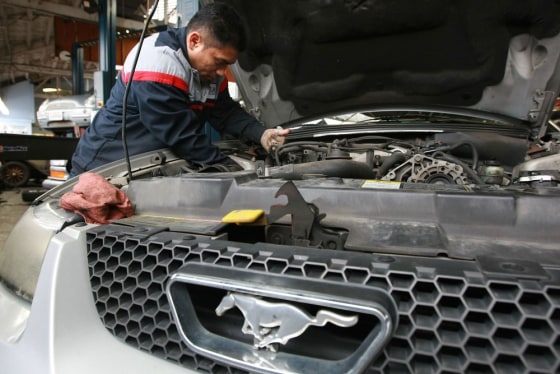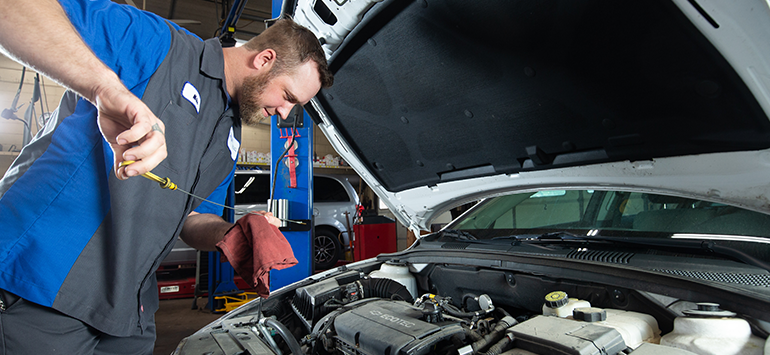
Your car's shock absorber is important for making certain a smooth adventure, correct handling, and safety and security while driving. It attaches the lorry to its wheels, absorbs shocks, and helps keep tire call with the roadway. However, like any type of vehicle system, the suspension can wear over time, resulting in a selection of issues. Recognizing the indication that indicate a trouble with your shock absorber can save you from pricey repair services and help preserve the general security of your lorry.
- Bouncy or Uncomfortable Adventure. One of one of the most visible indications that your automobile's suspension is failing is a bouncy or rough trip. A correctly functioning suspension system ought to absorb shocks from bumps, craters, and unequal road surfaces, keeping the adventure smooth and secure. If your automobile really feels exceedingly bouncy or if you experience a whole lot of jarring when driving over bumps, it's most likely that the shock absorbers or struts are broken and need attention.
- Trouble Guiding or Poor Handling. If your automobile starts to feel less competent when turning, or if you observe that it wanders to one side when driving straight, it could show an issue with your suspension system. Used suspension components, such as control arms or ball joints, can influence the cars and truck's handling, making it harder to keep or guide control, particularly in limited turns. Difficulty in dealing with or unpredictable guiding is a clear sign that your suspension might need repair work.
- Extreme or irregular Tire Wear. An usual adverse effects of suspension concerns is uneven tire wear. When the suspension is misaligned or certain components are worn out, your tires may not make consistent call with the roadway, causing them to wear erratically. You may observe that some locations of your tire walk are a lot more worn than others. If you see unequal wear patterns or if your tires seem to break faster than typical, it's a good idea to have your suspension inspected.
- Nose Diving or Back Squatting. When stopping, your automobile's front end may dip down substantially-- this is referred to as "nose diving." Alternatively, your car may squat at the back when you speed up, especially when lugging heavy loads. These issues can suggest damaged shock absorbers or shows off that are battling to keep the vehicle's balance during braking or acceleration. If you experience these symptoms, your suspension might call for instant interest.

- Dripping Fluid from Shocks or Struts. One more indication of shock absorber trouble is leaking liquid from the shocks or struts. Struts and shocks are hydraulic elements that count on liquid to function properly. It suggests the shock absorbers might be leaking if you see an oily or wet spot on the shocks or around the wheels. This liquid leakage can cause minimized efficiency in shock absorption, resulting in a rougher trip and reduced security. Dripping struts or shocks should be repaired as quickly as possible.
- Unusual Noises. Uncommon audios originating from your automobile while driving can also indicate suspension problems. If you listen to thumping, banging, or squeaking noises when looking at bumps or turning, it may be an indicator that suspension components, like bushings or sphere joints, are worn or broken. These components play a vital function in keeping the shock absorber steady, and if they're harmed, they can cause loud noises and bad automobile handling.
- Vehicle Leans to One Side. When parked might have a problem with the suspension system, a cars and truck that leans to one side or sags. This is often as a result of a busted spring or harmed shock absorber that no more supports the cars and truck's weight correctly. A lorry that is continuously leaning to one side can impact your vehicle's security and handling, and should be evaluated by an auto mechanic.
- Caution Lights or Check Engine Light. While suspension problems normally don't activate the check engine light, in some situations, concerns with the suspension, such as a malfunctioning adventure height sensor or a faulty digital shock absorber, can trigger alerting lights to show up. If you see a caution light pertaining to your car's suspension system, it is essential to have it checked by a specialist.
Verdict. The shock absorber is an important component of your car's total efficiency, affecting every little thing from managing to convenience. If you observe any one of the indicators mentioned above-- such as bouncy experiences, unequal tire wear, problem guiding, or strange sounds-- it's time to have your shock absorber inspected. Neglecting suspension troubles can lead to safety problems and more expensive repair work in the future.

If you think that your suspension wants repair, take your vehicle to a trusted auto mechanic for a complete evaluation. Early detection and repair work can ensure that your automobile remains to run smoothly and securely, keeping you comfy on the road.
Navigation
Home
Latest Posts
Experience Quality at Jake Sweeney Mazda
Published May 27, 25
2 min read
Your Trip Starts Below: The Jake Sweeney Mazda Benefit
Published May 23, 25
1 min read
The Mazda CX-90: Boosting the Driving Experience
Published May 23, 25
2 min read